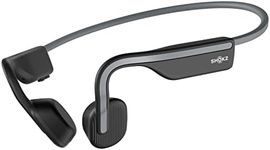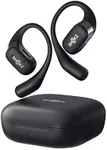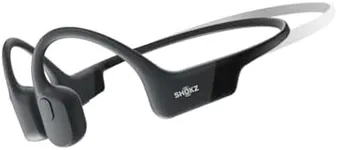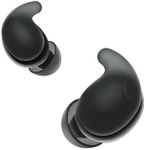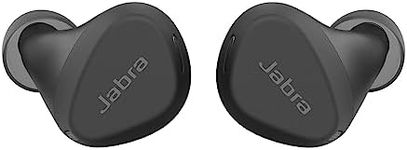Buying Guide for the Best Cycling Headphones
Choosing the right cycling headphones can significantly enhance your riding experience by providing entertainment, navigation, and even safety features. When selecting a pair, it's important to consider various specifications to ensure they meet your needs and preferences. Here are some key specs to look out for and how to navigate them to find the best fit for you.Sound QualitySound quality is crucial for an enjoyable listening experience. It encompasses clarity, bass, and overall audio performance. High-quality sound ensures you can hear your music, podcasts, or navigation instructions clearly, even in noisy environments. Look for headphones with good reviews on sound performance. If you prioritize rich, immersive sound, opt for models known for their superior audio quality. For casual listeners, standard sound quality may suffice.
Fit and ComfortFit and comfort are essential for long rides. Headphones should stay securely in place without causing discomfort. There are various types, such as in-ear, on-ear, and over-ear. In-ear models are compact and lightweight, making them ideal for active use. On-ear and over-ear models may offer better sound quality but can be bulkier. Choose a style that feels comfortable for extended periods and doesn't interfere with your helmet or glasses.
Battery LifeBattery life determines how long you can use your headphones before needing to recharge. This is particularly important for long rides. Battery life can range from a few hours to over 20 hours. If you often go on long rides, look for headphones with extended battery life. For shorter rides or commutes, a moderate battery life may be sufficient. Always check the manufacturer's specifications and user reviews for real-world battery performance.
Water and Sweat ResistanceWater and sweat resistance are important for durability, especially if you ride in various weather conditions or sweat heavily. Headphones with an IPX rating indicate their level of water resistance. IPX4 can handle light splashes, while IPX7 can be submerged in water. For cycling, at least IPX4 is recommended to ensure they can withstand sweat and light rain. Higher ratings provide more protection but may come at a higher cost.
ConnectivityConnectivity refers to how your headphones connect to your device. Most modern headphones use Bluetooth for wireless convenience. Bluetooth versions can affect connection stability and range. Look for Bluetooth 5.0 or higher for better performance. Some models also offer wired options, which can be useful if you prefer a stable connection without worrying about battery life. Choose based on your preference for wireless freedom or wired reliability.
Safety FeaturesSafety features are crucial for cyclists to stay aware of their surroundings. Some headphones offer ambient sound modes or bone conduction technology, allowing you to hear external sounds while listening to audio. This can be vital for hearing traffic and other hazards. If you often ride in busy areas, prioritize headphones with these safety features. For quieter routes, standard noise isolation may be acceptable, but always consider your safety first.
Controls and UsabilityControls and usability determine how easily you can operate your headphones while riding. Look for models with intuitive controls that are easy to use without taking your eyes off the road. Touch controls, physical buttons, or voice commands can enhance usability. Consider how you prefer to interact with your headphones and choose a model that offers convenient and safe control options.


